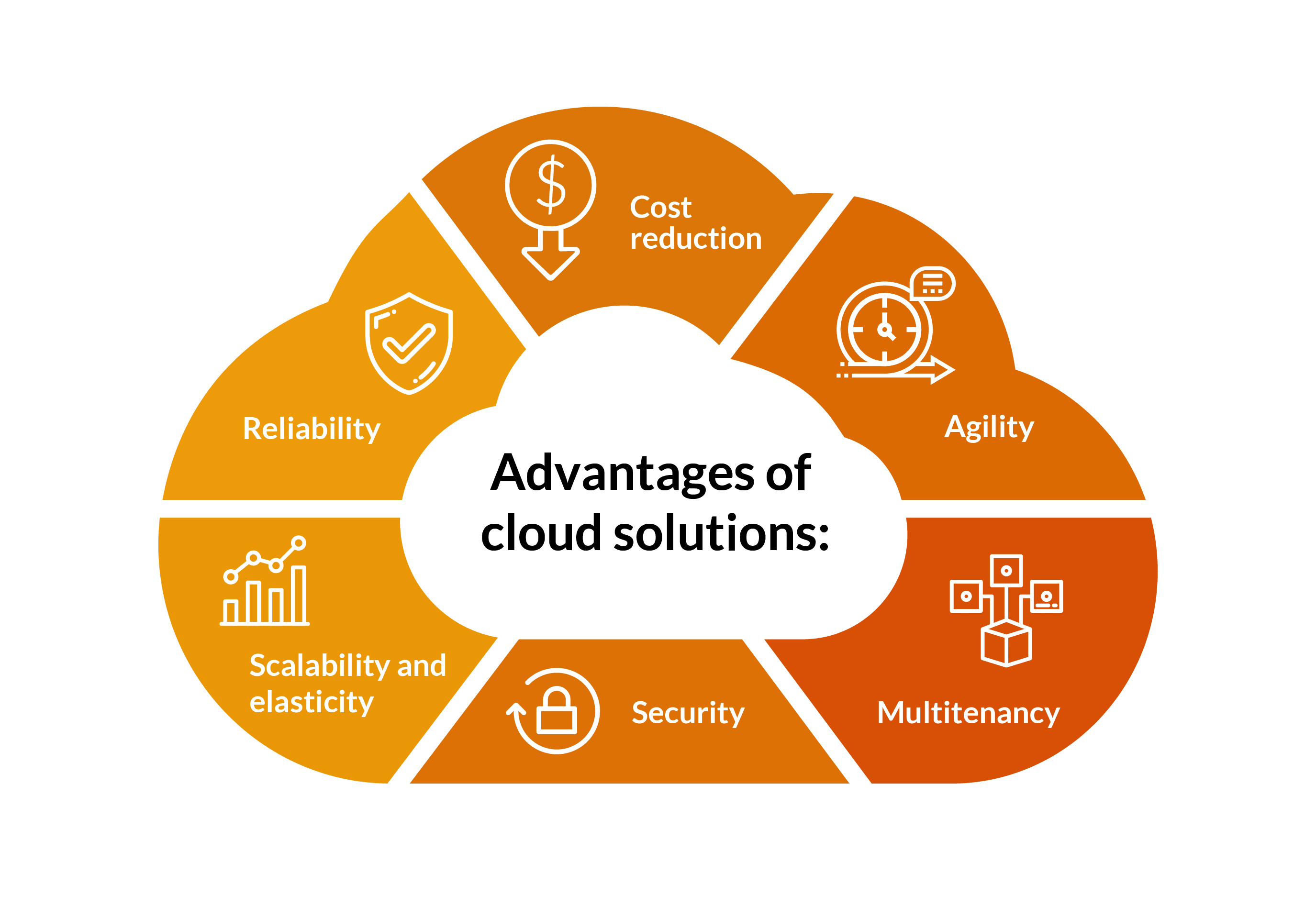Open the Power of Cloud Services for Seamless Workflow
In today's rapidly evolving business landscape, the utilization of cloud solutions has actually ended up being a vital component for organizations striving to boost functional effectiveness and adaptability. The capacity to effortlessly integrate cloud solutions right into existing facilities provides a myriad of advantages, varying from enhanced collaboration to enhanced safety measures (Cloud Services).
Advantages of Cloud Solutions
Cloud services supply a wide variety of benefits for services seeking enhanced efficiency and flexibility in their operations. Among the crucial advantages is cost-effectiveness, as cloud services get rid of the demand for companies to invest in costly equipment and infrastructure. By transferring to the cloud, companies can reduce capital spending and pay just for the sources they make use of on a subscription basis. This scalability allows businesses to easily change their computing resources based upon demand, making certain optimal performance without unneeded costs.
Another advantage of cloud solutions is enhanced partnership and accessibility. With information stored in the cloud, staff members can access information from anywhere with a net link, promoting smooth collaboration amongst employee working remotely or in different locations. This ease of access also improves performance and agility, as employees can work on projects in real-time without being connected to a details physical location.
Furthermore, cloud services provide enhanced safety and security procedures to shield sensitive information. Cloud service providers spend heavily in safety and security procedures and innovations to secure information from cyber dangers and guarantee compliance with market guidelines. This degree of protection supplies services with assurance recognizing that their data is secured against potential violations or data loss occurrences.
Cloud Migration Approaches
In the procedure of adopting cloud solutions, businesses must thoroughly plan and apply effective strategies for migrating their procedures effortlessly and securely. Cloud migration techniques are necessary to ensure a smooth shift of information, applications, and processes to the cloud atmosphere. One common method is the "Raise and Shift" strategy, where existing systems are transferred as-is to the cloud with very little modifications. This technique is quick but might not totally maximize cloud capabilities. An additional technique is the "Rehosting" approach, which involves re-platforming applications to make them cloud-compatible. Businesses can likewise select the "Replatforming" technique, where applications are maximized for the cloud atmosphere to leverage its complete possibility. The "Refactoring" technique includes upgrading applications to be cloud-native, taking full advantage of scalability and performance. Whichever approach is picked, complete preparation, risk analysis, and stakeholder communication are crucial for a successful cloud movement that lines up with company objectives.
Enhancing Data Safety in the Cloud

Accessibility control systems are additionally important in boosting data safety. Applying rigorous access controls makes sure that just accredited personnel can see, change, or delete delicate information stored in the cloud. Multi-factor verification adds an extra layer of protection by calling for users to offer several types of confirmation prior to accessing information.
Regular safety and security audits, vulnerability assessments, and infiltration screening aid determine possible weaknesses in the cloud framework. By constantly examining and monitoring protection actions, companies can proactively deal with any kind of susceptabilities and make sure a her explanation high level of data security in the cloud.
Enhancing Cloud Costs
To make certain ideal use of resources, companies have to strategically handle and maximize their expenditure on cloud solutions. One method to optimize cloud expenses is by taking on a pay-as-you-go rates model.
One more cost optimization method is implementing automation for resource monitoring. Automation tools can aid improve processes, such as organizing automated shutdowns during non-business hours or rightsizing circumstances based upon efficiency needs. In addition, leveraging discounts and reserved instances supplied by cloud provider can lead to substantial cost financial savings for long-term use.
Leveraging Cloud for Remote Work
Cloud services offer unmatched flexibility and performance for making it possible for remote job settings. Leveraging the cloud for remote job permits workers to access company resources and work together from throughout the world. By using cloud-based tools such as online desktops, video conferencing systems, and document sharing applications, companies can make certain seamless interaction and productivity among remote teams.
One of the key benefits of utilizing cloud solutions for remote job is the ability to range resources according to the altering needs of the workforce - universal cloud Service. Whether scaling as much as suit enhanced need or reducing during slower periods, cloud solutions provide the versatility to change sources in real-time, enhancing costs and efficiency
Furthermore, cloud-based protection actions aid guarantee and protect sensitive information conformity with policies, also when employees are working remotely. With built-in file encryption, accessibility controls, and tracking tools, companies can maintain a protected job setting regardless of where their staff members are situated.
Conclusion
Moreover, cloud services supply improved security steps to protect delicate data. Cloud migration techniques are important to make sure a smooth transition of information, applications, and processes to the cloud environment.Implementing robust safety and security measures is vital when safeguarding data in cloud atmospheres. Data protection in the cloud includes a combination of technology, policies, and techniques to safeguard information from unapproved accessibility, breaches, and data loss. By carrying out cloud movement methods, improving data security, enhancing costs, and leveraging the cloud for remote work, organizations can optimize effectiveness and expense savings while sustaining a dynamic workforce.